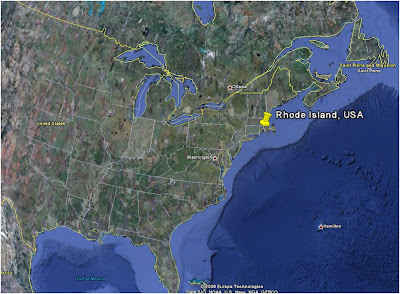The Rhode Island State Flag: May 29 is Ratification Day, the anniversary of Ratification of the Constitution by the State of Rhode Island; May 29, 1790
Though adopted in 1879, the Rhode Island State Flag was only the third of the original thirteen colonies to officially sanction a state banner. New York and New Jersey had adopted official banners two years earlier in 1876.
Almost 90 years after Rhode Island became the last of the original thirteen colonies to form a union, the General Assembly of the state adopted an official design for a state flag. The colours and design of the flag date back to colonial times and the original establishment of Rhode Island and the Providence Plantations under King Charles II of England. The most prominent feature of the flag, the anchor, dates back to 1647 and the Cromwellian Patent of 1643 when the Providence Plantations were established. Later, when a more liberal charter was bestowed upon the colony, the anchor was again chosen for the seal and the word "HOPE" was added.
The colours, white and blue, were flown during the American Revolution, the War of 1812 and the Mexican War. The thirteen stars representing the original thirteen colonies were also displayed on flags flown by the Continental Regiments during the Revolution.
Today’s flag is much the same flag that was adopted in 1897. Centred on the white field is an anchor surrounded by thirteen stars. Below the Anchor is a blue ribbon that displays the word "HOPE", the state motto.
Rhode Island and Providence Plantations, more commonly referred to as Rhode Island, is the smallest U.S. state by area. Rhode Island borders Connecticut to the west and Massachusetts to the north and east. Rhode Island also shares a water border with New York's Long Island to the southwest.
Despite the name, most of Rhode Island is in fact on the mainland.




No comments:
Post a Comment